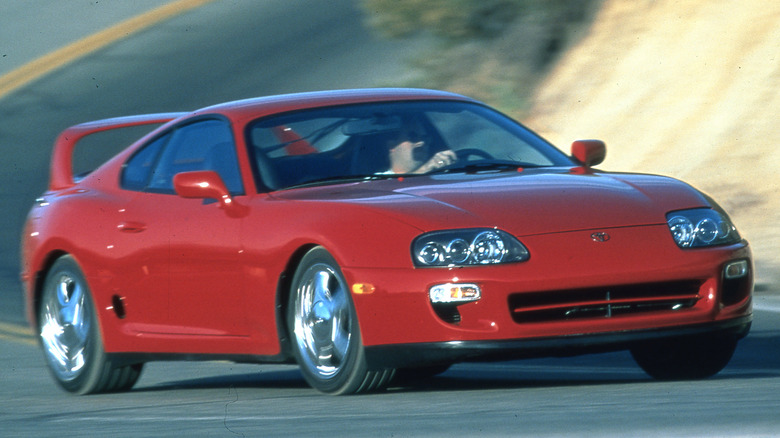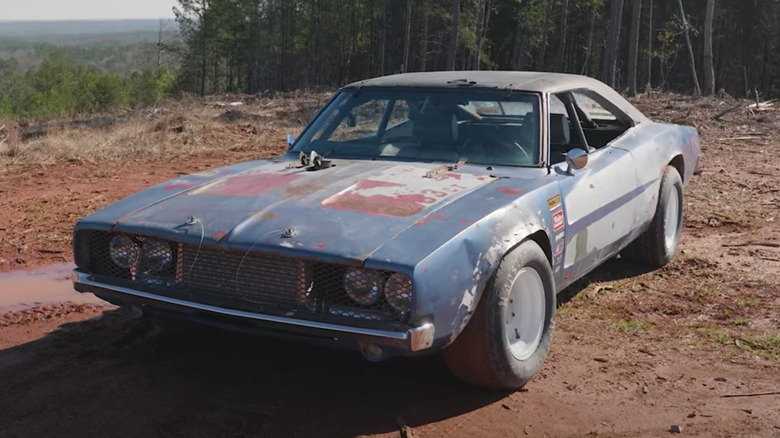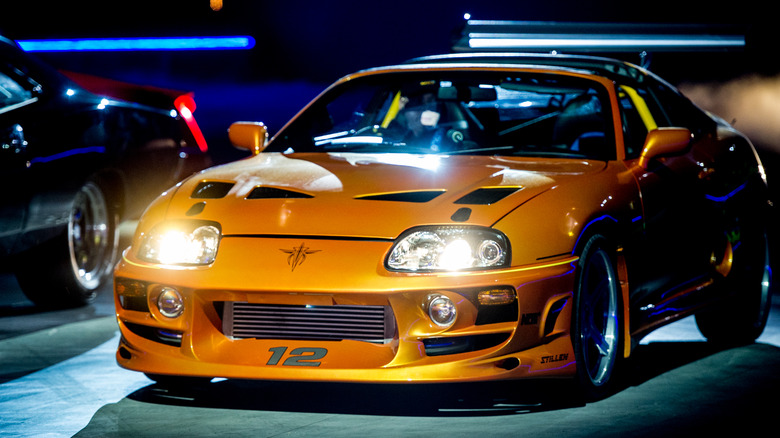Toyota 2JZ Vs. 1JZ: Which Is The Better Engine?
Toyota's 1JZ and 2JZ inline six-cylinder engines are among the most iconic powerplants the brand has ever manufactured, with a buzz far exceeding the popularity of the cars they were initially installed in. Nowadays, the practice of swapping a 1JZ or 2JZ into a lesser-powered Toyota has taken off like a rocket, and even more daring retrofits are being undertaken, such as into BMWs and certain American cars.
Perhaps most famously, the Motor Trend show Roadkill swapped a 2JZ into a 1968 Dodge Charger (below), replacing the original 383 cubic inch V8. That might sound like a sacrilege to some gearheads, but the Mopar big block was tired, and the 2JZ wound up cranking out approximately 500 horsepower, or about 200 horsepower more than the factory V8.
The United States had limited exposure to these desirable powerplants, which appeared in the 1993 to 1998 Toyota Supra, plus a detuned version in some Lexus cars during a similar timeframe. Worldwide, they powered about a dozen different Toyota models, so availability is good, but due to limited domestic supply, U.S.-based tuners may need to import their motors from abroad or else purchase them from a cottage industry that has sprouted up doing the same.
Similar, but different
The smaller 2.5 liter 1JZ was released first as a replacement for the aging M-series inline-6 cylinders. However, Toyota decided not to fit the 1JZ into cars destined for the United States market, believing Americans would prefer the larger 2JZ.
The 1JZ has an "oversquare" design, where the 86mm cylinder bore exceeds the 71.5mm piston stroke. Like many engines with this bore-and-stroke relationship, the 1JZ can quickly reach high RPM. The 1JZ's cylinder head is stuffed with dual overhead camshafts and four valves per cylinder.
Enthusiasts focus on the turbocharged version, the 1JZ-GTE. Initially, it had twin turbochargers — one turbocharger per three cylinders, but toward the end of its lifespan, a single large turbocharger fed all six cylinders. To cool the intake charge, an air-to-air intercooler was fitted. In stock form, the output of the twin-turbo motor was 276 horsepower.
The 2JZ retains the same 86mm cylinder bore as the 1JZ but has a longer 86mm stroke for a total displacement of 3.0 liters. A different taller engine block and longer connecting rods were required to accommodate the additional travel.
Also, like the 1JZ, a twin-turbocharged version of this engine was available, called the 2JZ-GTE. The 2JZ-GTE's boasts two Hitachi turbochargers in a sequential configuration, which means that a smaller turbo kicks in first at lower RPM to improve low-end torque and reduce the "turbo lag" in throttle response that sometimes plagues boosted engines. In the U.S. market Supra, this engine made 320 horsepower.
Price is also a factor
So which engine is the better choice for your upcoming swap? While the 1JZ's shorter stroke permits higher RPM operation, the 2JZ has just about every other advantage. Its larger displacement makes more power and torque, the engine block itself is more heavily reinforced, and the internals have what's called a "non-interference" design which means that if a failure occurs in the valvetrain, the pistons won't contact the valves, which can create massive damage.
Regarding the potential for modification, a 1JZ with stock internal components can safely be coaxed into producing about 650 to 700 horsepower, whereas the 2JZ can support 800 horsepower or more.
All that said, the 1JZ is still an excellent engine worthy of your consideration, and it does have one major ace in the hole that we haven't yet discussed: price. The 1JZ is significantly cheaper to source than its famous movie star big brother. That's right, a big part of the 2JZ's mystique came from "The Fast and the Furious film franchise, where Paul Walker's character drove a modified 2JZ-powered Supra, said in the films to be capable of running a ten-second standing quarter mile.
If cost is no object, splurge for the 2JZ. If your budget is a little tighter, the 1JZ is also a fine choice and one that's often underrated due to the larger-than-life presence of the 2JZ.


